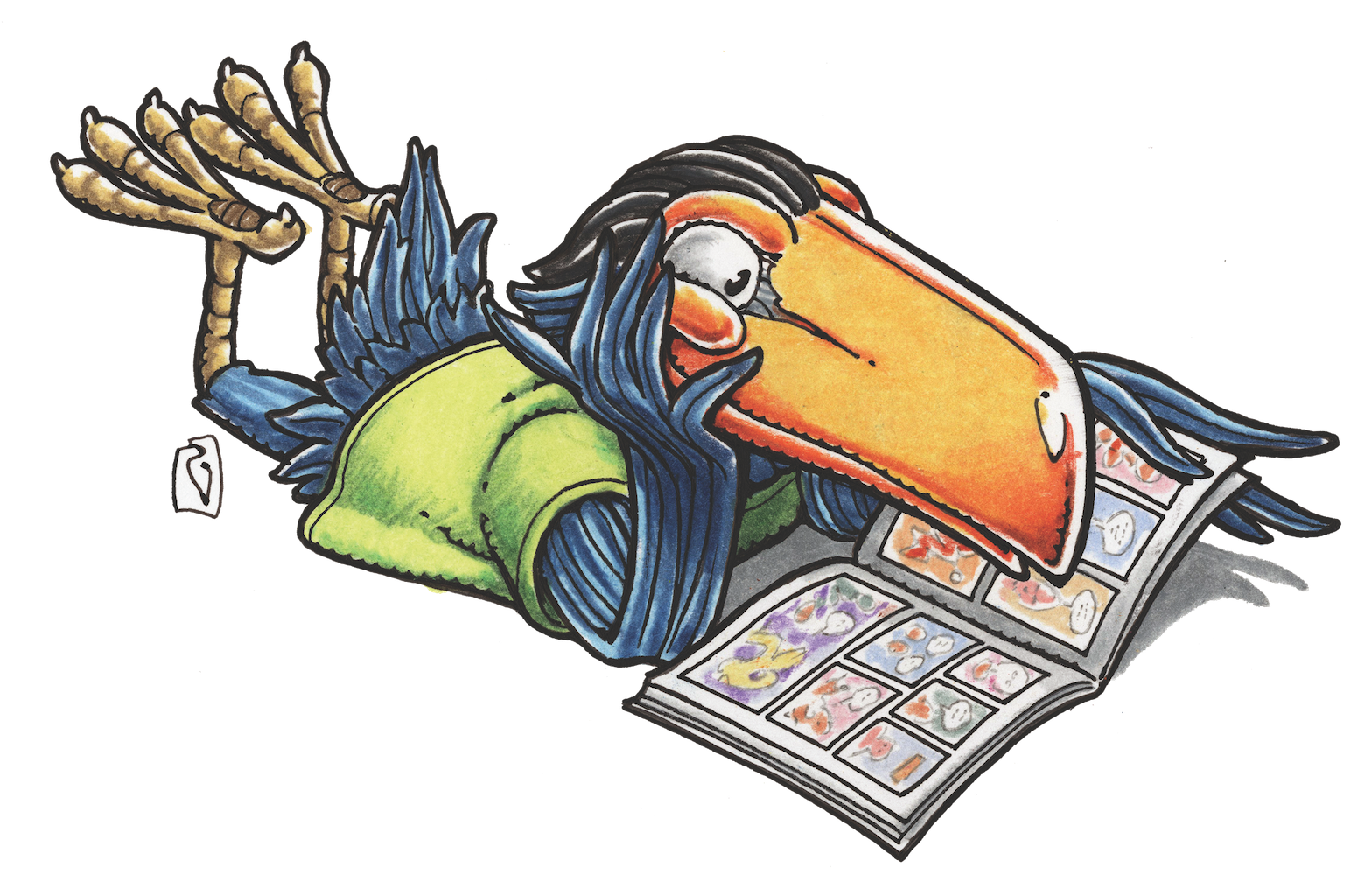GET YOUR PORTFOLIO READY FOR WONDERCON ANAHEIM!
Dilettante 003: Showing Your Portfolio at Conventions


WonderCon Anaheim is right around the corner—click here for details!—and many artists are interested in showing their portfolios. For a look at the Portfolio Reviews scheduled for this year’s show, please click here. Our “resident artist” Steve Lieber offer some tips to everyone looking to show their work at conventions.
With convention season upon us, I’ve been asked to share some thoughts about showing your comics portfolio. I’ve written about this before, but there’s new information in here even for those who’ve read my previous takes on the subject.
What to show:
6-10 pages of your best sequential storytelling. That’s all anyone needs in order to tell if you’re a contender. Show that you’ve got a good grasp of narrative, and that you can keep characters, situations, and settings consistent and recognizable. Show some of the emotional range you can depict, too.
Having original pages used to be standard. Then it was optional. Now it seems awkward and unnecessary. Digital tools are so ubiquitous that I don’t see any reason to show anything but clean printouts. What size printouts? That’s up to you. Does your work benefit from being viewed large? Then go big. Does your line look better reduced? Go smaller.
Put the printed pages in a portfolio or presentation binder. Have copies you can offer to leave behind, with your URL and email on every page, and a business card with the same information. (If you don’t have a web portfolio yet, quit reading this right now, and go set one up at Blogspot.com or Portfolio.Deviantart.com—they’re both free.)
What not to show:
Get rid of everything but your best work. If you feel inclined to apologize for any particular piece, take it out.
Is it unfinished? Take it out. I frequently hear variations on this: “I only had a couple of days to do these pages.” No, you had your entire life up to the moment you showed me the work to do those samples.
Is there something confusing on the page because of some strange requirement in the script? Take it out or rework the page. No one is going to ask to see the script when evaluating your portfolio. They’re just going to wonder why your storytelling doesn’t make sense.
Are there pages in your portfolio that were there the last time you attended this convention? Maybe you need to stay home drawing new samples rather than spending the weekend showing old work.
Who to show to:
Editors and art directors at large publishing houses:
These are generally the only people who can get you paying work. More often than not, their critique (if they offer one at all), will be based on what they’d need to see for them to consider hiring you. Their comments often won’t have anything to do with making your work better, just more marketable to their company at that particular time. They’ll be exhausted and stressed out with serious convention tension and may be brisk or even rude to you. It isn’t personal. When getting in line for portfolio reviews at a big company, find out who is doing the reviewing. Sometimes it’s an editor who can hire you; sometimes it’s somebody from marketing or even another freelancer.
Know the sort of work they publish! A portfolio that could get you a job offer at Weird Fetish Press would probably not be worth showing to an editor at Family Fun Comics.
Small and independent press publishers:
Some of these companies only want to look at projects, not portfolios. Others are willing to help assemble teams. The editors and publishers you’ll meet at these tables run the gamut. Some are sensitive and thoughtful people with a love of the medium and a genuine interest in expressive art. Some are just there to promote the books they’re already publishing and don’t have the time to look at your efforts. And some are looking for dirt-cheap work from artists too inexperienced to know when they’re being taken advantage of. Talk to your peers and read the blogs to get a sense of who falls into which camp.
Established professional artists:
Catch them when they’re not busy (ask!), and you can get good feedback from someone who has wrestled with the same problems that are troubling you. Useful input doesn’t always come from the most popular artist; some really gifted people can’t explain what they do, while others in the middle of the pack can teach you quite a bit about craft and technical matters. The artist you speak to might even be in the market for an assistant (see last month’s Dilettante column on mentorship.)
Writers:
Many comics writers have input regarding who illustrates their stories. Sometimes they’re on the lookout for a collaborator. They also talk to their peers and can recommend you to another writer. Just remember that their position in the industry can be every bit as unsteady as an artist’s and that they may need to run off and try to hustle their own next job.
Your peers:
Their egos are as fragile as yours, but you can commiserate, share tips, and maybe find a collaborator or even a friend. Making lasting connections with other artists at your own level is crucial to developing a career. Just don’t limit yourself to their feedback.
How to act:
The more thorough the critique, the more grateful you should be. It takes effort and energy to describe the problems in a page. It takes nothing to say, “Nice job.” Whatever criticism they offer, do not, under any circumstances, offer an excuse. Say “Hmm,” and “Thank you” and nod sagely and maybe ask for clarification. Don’t say “I had to rush through that page,” or “Well, this is just a first attempt,” or “I’d fix that in the inks.” And do not, under any circumstances, respond by questioning your critic’s judgment, ability, or taste. No one will react to that by reevaluating their initial impression. They’ll just write you off.
In all cases, keep your presentation short and slick. Show that you’re organized and professional. Be clean and polite. Get their contact info and follow up with a brief email a few days after the convention, thanking them for their time and input. Repeat at subsequent shows when you have new, improved samples that incorporate the valuable feedback you got on the last batch.
Good luck!
Steve Lieber’s Dilettante column appears the second Tuesday of every month on Toucan.